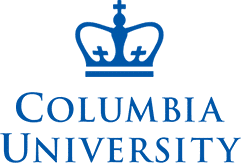
contour to the entire torso.
A breast lift is one of the more powerful procedures for transforming your body. It is also one of the most misunderstood. Patients often think that a breast implant can “lift” their breasts. But the job of any implant is to provide more volume. Breast ptosis, which is laxity or sagging in the skin and tissues, generally requires a skin excision in order to restore the breasts to a higher position on your chest wall, creating a firm-looking contour with tight skin. The end result is a perky, youthful-looking breast. Once your breasts are back in their proper place, it can also make your abdomen look longer and leaner, and your waist appear smaller. This is what makes a breast lift so rejuvenating. The downside for many when considering a breast lift, however, is the idea of incision lines. It’s important to keep in mind that the predominate portion of them are hidden within the crease beneath your breast, and those that are visible tend to heal extremely well. It’s one of those things that patients fear that generally winds up being a non-event. Most breast lift patients say that any visible scarring is a fair trade-off for how great they feel after surgery.
Board-Certified Plastic Surgeon, Dr. Sean Doherty, is an expert in all areas of breast surgery. He has a deep understanding of what a breast lift can and cannot deliver. His exquisite surgical technique leaves a nearly imperceptible incision line. Dr. Doherty’s goal for his Boston area patients is to deliver a restored, natural look to the breasts. This may entail a breast lift on its own, in combination with a breast implant and/or fat grafting for additional volume, or as part of a Mommy Makeover procedure. The right treatment plan for you will be discussed in detail during your initial consultation.
Breast Lift Consultation
Delivering an exemplary aesthetic result is about matching the right procedure or procedures to your individual anatomy, lifestyle, and goals. Plastic surgery is never one size fits all. This is why it is always best to book an in-person consultation with Dr. Doherty so that he can listen closely to what bothers you about your body contour. Thanks to the internet, patients often come in thinking that they need one thing when they actually need something entirely different.
Dr. Doherty will ask about your medical history, family history, and any prior procedures, surgical or non-surgical, that you may have had as well as how your body healed. Then, he will perform a thorough physical exam to assess your:
- Skin texture
- Elasticity or “bounce back” quality of the skin
- Degree of ptosis
- Natural breast volume
Dr. Doherty will take a series of accurate measurements, including the position of your nipples in relation to the inframammary fold or crease beneath your breasts. This is one of the best barometers for determining whether or not a breast lift is right for your body. Then he will discuss with you the cost of a breast lift and solve any questions about the procedure.
*Each patient is unique and individual results may vary.
Why Do Breasts Sag?
Father Time does not discriminate. Age adversely affects the skin and tissues everywhere in your body. This is partly due to the fact that starting around age 25, the body naturally produces less collagen and elastin. The former provides a firm, lifted foundation while the latter is what allows your skin to stretch when you move, and then retract back into place. Less of both means that your tissues become weaker. This may cause your breasts to head south. Furthermore, other factors such as:
- Pregnancy
- Breastfeeding
- Weight gain/loss
- Hormonal fluctuations
These can all exact a toll on the sanctity of your breast tissue. You may also just be someone who, due to genetics, is more prone to hanging or pendulous breasts.
Who is an Ideal Candidate for a Breast Lift?
The ideal candidate for a breast lift is any woman:
- In good overall health
- Non-smoker
- Who is bothered by breast sag
- Understands that scars are necessary for surgery
Lifting the breasts has such a rejuvenating effect on the entire torso as it addresses the two issues that make your breasts look perky:
- Nipple position
- Upper pole fullness
Ideally, your nipples should be pointing straight ahead when you look at yourself in the mirror. However, in women with ptotic breasts, the nipples tend to point down towards the ground. A general rule of thumb for Dr. Doherty is that if your nipples sit at or below the inframammary fold, which is the crease beneath your breasts, you will benefit from a breast lift.
Breast Lift, Breast Implant or Mastopexy Augmentation?
Patients always want to know if they can get enough lift from a breast implant alone. If you only have a slight degree of ptosis, and you want more volume in your breasts, this may be possible. It is something that Dr. Doherty will discuss with you in detail during your initial consultation. Unfortunately, there is only a small group of patients who fall into this category.
Women with a more severe degree of sagging in their breasts who also want more volume will benefit from a mastopexy augmentation. This is a procedure that can address all of the common issues that affect women with children in particular. Sometimes, the breast lift and the breast augmentation can be performed together. Some women may even decide to add on a tummy tuck as part of a Mommy Makeover. Dr. Doherty will perform the procedures at once, but only if it is safe to do so. Otherwise, the procedures will need to be scheduled in stages.
*Each patient is unique and individual results may vary.
Do Not Fear the Scar
Probably the single biggest roadblock for potential breast lift patients is the scar. Anytime that the skin is cut, there will be an incision line. While the idea of permanent lines in an area as visible and sensitive as your breasts can sound scary, the reality is that scars on the breast heal extremely well. Not only does Dr. Doherty utilize precise surgical techniques that reduce any tension on the skin, which is what leads to a thick or heavy scar, but he also recommends the post-surgical use of silicone topical treatments, and/or microneedling and energy-based treatments, such as laser. At 2-3 weeks post-surgery, he will have you start using a product like Silagen or Biocorneum, laser skin resurfacing, and/or microneedling. All have proven excellent for reducing the appearance of any visible lines. But most patients don’t notice or aren’t bothered by their incision lines a year out from surgery.
Breast Lift Procedure
Since pregnancy and breastfeeding may stretch out the skin and tissues of the breast, Dr. Doherty will sometimes suggest that you wait until after you are done having children before scheduling a breast lift. The procedure is performed in an accredited surgery center or Boston area hospital under general anesthesia.
There are three types of breast lift incisions:
- Areola incision
- Lollipop incision
- Anchor incision
As the name implies, the areola incision is made around the edge of your nipple. A lollipop incision adds a vertical cut down the middle of the breast, and an anchor incision goes around the nipple, down the breast and underneath the crease. The best approach for you will depend on the degree of ptosis as well as your desired outcome. For patients with severely compromised breast tissue, Dr. Doherty may also place a surgical mesh product, such as GalaFLEX, for additional support. Again, this is something that will be discussed with you in detail during your initial consultation.
Once the appropriate incision has been made, Dr. Doherty will lift the skin, trim any excess, and reshape your breasts in order to deliver a better contour to your entire torso. Last, he will reposition your nipple to a higher, more flattering position on your chest wall. In general, the skin around the nipple does not need to be trimmed. However, if you have gained and lost a lot of weight, and your nipples have stretched out, Dr. Doherty may need to adjust their size to fit your new breasts.
*Each patient is unique and individual results may vary.
Recovery from a Breast Lift
After surgery, your chest will be wrapped in gauze and/or a support bra in order to minimize movement, decrease discomfort and promote healing. Most patients describe the recovery from a breast lift as uncomfortable, not painful. Typically, you can expect to feel sore for the first few days following your procedure. While most patients manage with over-the-counter medications, every person’s pain tolerance is different. If you are someone who needs something stronger, Dr. Doherty will safely prescribe prescription pain medication and anti-inflammatories. Taking a stronger medicine for the first few days after a breast lift is very appropriate.
There will be swelling and possibly some bruising for the first two weeks, but most patients can return to normal activities 1-2 weeks after surgery. You will need to wear a surgical bra for compression for at least three weeks after surgery. Patients typically can return to light exercise and cardio at 2 weeks post breast lift, and more strenuous exercise at 3-4 weeks out. The only exception is upper body work. Dr. Doherty asks all of his breast surgery patients to wait 4-6 weeks before lifting any weight. While it may take 3-6 months for your swelling to fully resolve, you will notice the improvement in your body contour immediately.
So, if your breasts are bringing you down, literally and metaphorically, schedule a consultation to come in and discuss a breast lift. It really is one of those procedure that can elevate both body and soul.
To find out more about a breast lift procedure with Dr. Sean Doherty at his Boston or Chestnut Hill office, contact us today or call (617) 450.0070 to schedule a consultation.















